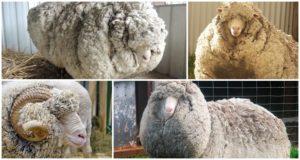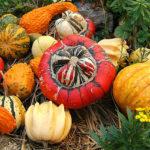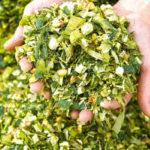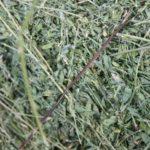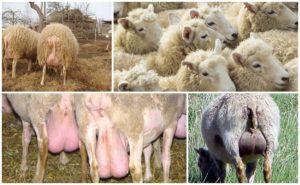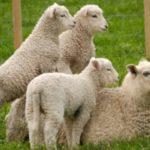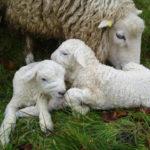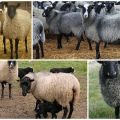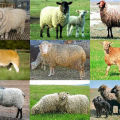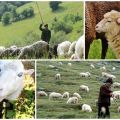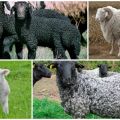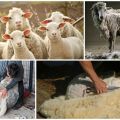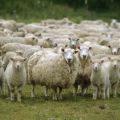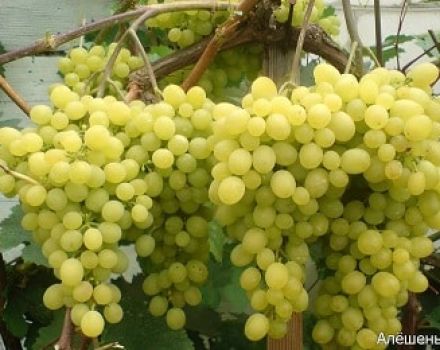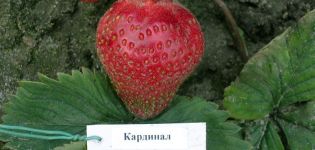The nuances of breeding sheep of meat breeds, how quickly they grow and the rules of feeding
Meat sheep are kept in private households and are raised on large farms. Much attention should be paid to the diet of animals. Balanced feed promotes rapid weight gain. The purchase, maintenance of meat sheep and breeding pay off within two years, subject to demand for the product. But unpretentious animals can be kept in the pasture, saving on the equipment of the sheepfold.
Pros of breeding meat sheep
It is profitable to be engaged in the production of lamb for the following reasons:
- one sheep provides a large amount of meat and lard;
- meat breeds can be kept on open grazing and save on food;
- animals tolerate cold well and can stay on tebenevka in winter.
Sheep of beef breeds quickly gain weight even with a meager diet. They are easier to care for than cattle. Free grazing in summer and winter will increase the amount of production and save on feed and barn equipment. When kept indoors, animals willingly eat compound feed.
Breed selection rules
To choose a breed, you need to decide on the type of product. There are two types of meat breeds: meat-greasy and meat-wool. In addition to meat, they provide fat or fat tail and wool. Meat breeds produce a lot of milk. Therefore, when they are diluted, at least two valuable products are obtained - meat and milk. Among domestic breeds, Romanov, Gorky, Katum, West Siberian are popular. Of the foreign breeds, Dorper, Texel, Prekos are distinguished by high productivity. When choosing meat and wool sheep, you should pay attention to the Edilbaev, Hissar and Saraja breeds. Main selection criteria:
- multiplicity;
- endurance;
- high rate of mass gain;
- strong immunity.

For the beginning of breeding, unpretentious breeds, resistant to cold climates, are suitable - Romanov and Gorky. Kuibyshev sheep are distinguished by high productivity. They can be grazed all year round and lambs gain weight quickly. At 6 months old they weigh 60 kilograms and are ready for slaughter.
Conditions of detention and care
The choice of maintenance method depends on the financial capabilities of the farmer and the climate in the region. The most economical option is grazing on an open pasture all year round. The meat of such sheep is valued higher - as an environmentally friendly product. It is convenient to keep sheep in the pasture in the southern regions. But usually free grazing is combined with koshar keeping, since animals and shepherds need shelter from bad weather and midday sun. The sheep are looked after in a more thorough manner:
- hooves are trimmed every 2 months;
- heated drinking bowls are installed for the winter;
- fed 3 times a day.
In stalls, you need to change the litter and remove the manure so that the valuable animal hair does not get dirty. Sheep in the pasture do not come into contact with manure, so their wool is cleaner than that of livestock in a sheepfold.
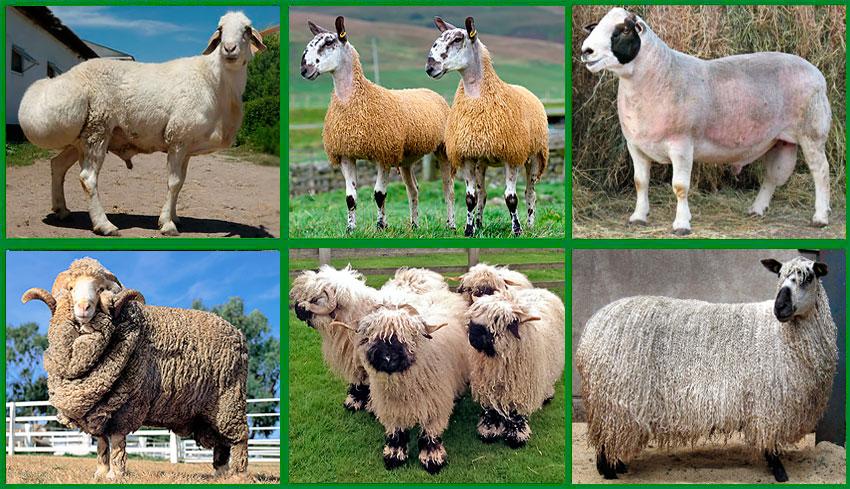
Pasture
Sheep of meat breeds are grazed on natural or artificial pasture. The best terrain for grazing is dry land, steppe, mountain slopes. Steppe pastures provide vitamin nutrition in spring. Dry and mountainous areas are the most valuable and versatile.
When choosing a location, pay attention to the growing herbs. For beef sheep, hogweed, legumes, white clover and timothy are useful. Dangerous and poisonous plants - red clover, buttercup family, field horsetail and feather grass.
Red clover in the first year of growth and buttercup contain a nerve poison that causes seizures in animals. Horsetail is dangerous for cat sheep, as it provokes a miscarriage. Feather grass achenes spoil the coat, and the stems are too sharp to chew. Also, one should not graze sheep after rain or dew, especially in an alfalfa field. The moist green mass ferments in the stomach and is not digested.
Raising beef rams on artificial pastures is safer, but laborious. The fields are cleared of weeds, sown with perennial grasses, and they are made sure that pests do not start. Gopher holes become the focus of helminths, to which lambs are sensitive.

In the summer, the flock is taken out after the dew has melted. Animals feed until noon. Then they are led to the river for a watering hole or to a shelter with supplied water. When the heat subsides, the sheep are again led to feed. They are in the pasture from about five in the morning until ten in the evening.
Koshara
Keeping in a sheepfold is used as the main method of raising meat sheep. If the animals will be constantly indoors, it is necessary to provide them with comfortable conditions:
- bright lighting - in the dusk, the reproductive ability of rams decreases, so daylight hours need to be increased with lamps;
- warm floor - a layer of straw should be poured onto a hard clay surface;
- fresh air - in a closed sheepfold, it is necessary to equip a ventilation system.
During the construction of the premises, the number of square meters of stall required for the herd is calculated.
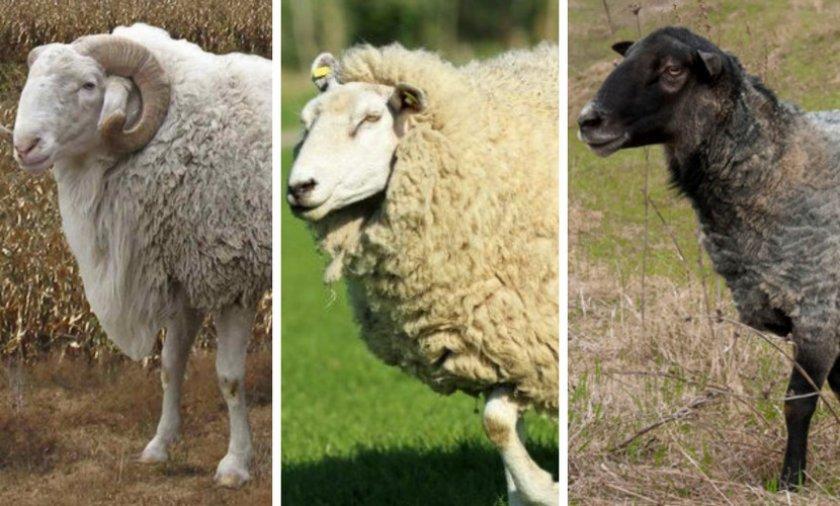
The number of cubic meters per animal:
- lamb - 0.7;
- ram - 3;
- sheep with newborn lambs - 2.5.
For walking, an area of 4 square meters per individual is being built and with a fence 1.5 meters high. The entrance is designed depending on the size of the building and the number of animals. A door 1.5 meters wide is installed in a small sheepfold so that one sheep can freely pass through the opening. For a large herd, a double-leaf gate is installed.
They also provide a separate entrance to the feed room and a driveway for trucks.
Feeders with a coarse-mesh protective mesh are installed along the stalls. The sheep will stick their head through the net, but they won't trample the food. Drinking bowls with a volume of 10 liters will provide livestock with plenty of drink. The material for the feeders and drinkers is wood. Technical premises are equipped in the sheepfold:
- feed storage;
- room for haircuts;
- slaughter department.
You will also need a separate cold storage room for the carcasses.
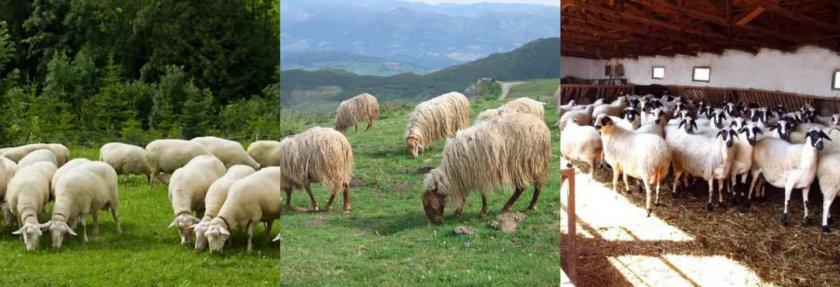
Diet
Meat sheep menu consists of three components:
- green forage - fresh grass in pasture, silage in winter;
- coarse fodder - straw from greens of legumes, barley, oats, hay from alfalfa, clover, canned haylage;
- vegetables - fodder beets, carrots, pumpkin, zucchini;
- concentrates - grains of wheat, oats, corn, bran, sunflower cake.
Daily ration of adult sheep for fattening:
| Product | Norm in kilograms | |
| For adult animals | For lambs up to 6 months | |
| Clover or alfalfa hay | 1,5-2 | 1,5 |
| Silage, fresh grass | 2-5 | 1,5 |
| Concentrate | 0,5 | 0,3 |
To gain weight quickly, animals require protein. Their highest content is in concentrates from peas, barley and corn. They also give mineral dressing - chalk is mixed into crushed grain. The feeding troughs of the fattening animals are constantly filled. Concentrates are given after the sheep have drunk, and green and roughage before water is fed.
How long does a ram grow to slaughter weight
Meat lambs are rapidly increasing in weight. At four months, they gain half the mass of adult animals, and by the year they almost completely catch up with them. Feeding begins at the age of four months, and after 4 months the lambs are allowed to eat. Daily weight gain depends on breed and diet. Muscle mass increases up to six months.
Experienced farmers sell meat when the rams reach ten months of age. Animals reach their maximum weight at this age, so it is not profitable to feed them further. Sheep eat a lot, but gain little in mass. Adult rams and sheep are fattened after lambing for 2 months. On average, rams grow from birth to slaughter for 8-9 months.

Slaughter
Preparation of animals and procedure:
- hair is cut one month before the procedure;
- transferred to a separate room per day;
- do not feed, but give to drink;
- the sheep is tied up and the throat is cut in a supine or hanging position;
- bleed;
- skinning, butchering.
The carcass should be cut into large pieces, since small pieces are less stored. Sheep are calm and intellectually undeveloped animals. Therefore, they do not anticipate the danger before slaughter.
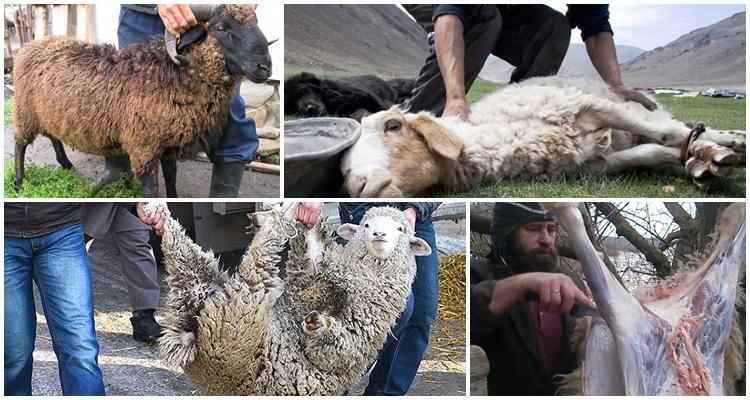
Subtleties of reproduction
The breeding season for meat sheep begins in the fall, in October, and lasts until January. The gestation period is 5.5 months. During the period of coverings, oatmeal and barley chaff and hay are added to the food of sheep-producers. Sheep need to diversify their diet with vegetables, provide plenty of drink.
Lambing requires cleanliness in the room, you need to remove the manure and change the bedding. Sheep can stand or lie down during labor. Therefore, a thick layer of clean straw should be placed on the floor to avoid injury or infection.
The sheep licks the newborn lamb and feeds it with milk. If there are more than two pups in the litter, they will have to be fed artificially. One female can feed no more than two lambs.
After giving birth, you need to check whether the afterbirth has come out - the shell of the fetus. Usually it comes out immediately or after feeding the newborn. If the afterbirth did not come out or came out partially, you need to contact your veterinarian. Due to the delay in the membrane, inflammation of the uterus develops during the day.
Buying sheep
When buying beef rams, pay attention to the appearance of adult animals and the weight of the lambs.
Adults
Signs of a healthy ram:
- strong physique;
- wide chest;
- clean coat, eyes and ears.
The breeding males must weigh 100 kilograms. Bright is distinguished by elastic round udder.
Young animals
Young lambs are selected for the same qualities as adults. Check with the seller about the vaccinations given to the animals. It is important to check the bite of the young. If the teeth are in the wrong position, sheep will not be able to chew solid food and gain weight.
Lambs
Lambs at the age of four months must meet the developmental norms established by the breed standard. The norm for the weight of grown lambs is 45 kilograms and above. Healthy lambs get scared and run away when people approach.
